
Blocks offer a wealth of learning opportunities for children, supporting not only fine motor skills but also visual perception development. Below are activities we discovered through occupational and visual therapy to help my son with his visual perception delay, along with other fun activities we've enjoyed at home.
You can use block sets like Duplo Legos or Parquetry Blocks for the following activities.
Objective: The child builds an identical block formation using verbal instructions only, and the adult does the same with verbal instructions from the child.
Setup: The child and adult sit across from each other with a barrier between them, so neither can see the other’s blocks.
Activity: The adult uses 2-3 blocks to create a simple structure. Using only verbal instructions (e.g., "below," "on top of," "next to"), the adult describes the block formation, and the child attempts to build an identical structure.
Increasing Difficulty: To make the activity more challenging, add more blocks and incorporate color descriptions. You can also switch roles so the child describes the structure for the adult to build.
Objective: The child forms a mental image of an object through touch alone and identifies it without seeing it.
Setup: The child sits across from the adult. Place various shapes and objects into a non-transparent bag.
Activity: Without looking inside the bag, the child reaches in, feels an object, and tries to identify it based on touch alone.
Place a few items on the table in front of the child. Then, ask the child to turn around while you remove one object. Once the child turns back, have them identify which object is missing.
Visual perception is the brain's ability to interpret and make sense of the visual information received through the eyes. This skill is vital for reading, writing, and problem-solving. Our Visual Perception Curriculum is a comprehensive workbook designed to strengthen these skills through fun and engaging activities, helping a child build a strong foundation for learning.
Give the child a card with the image of a block pattern. This could be as simple as four colored Duplo Legos or as complex as a Parquetry puzzle. Instruct the child to recreate the pattern or image.
Whether using wooden, foam, or Duplo Lego blocks, the learning possibilities through play are endless. Explore these fun ideas!
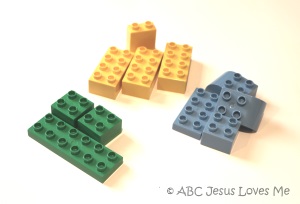
Give the child a pile of blocks in different colors and shapes. Ask the child to sort them by color, shape, or by both color and shape for added challenge.

Challenge the child to see who can build the tallest tower using blocks. For a fun twist, roll a dice to decide how many blocks to use when building the tower!
The number of blocks a child can stack varies with age and developmental stage. Generally, a 2-year-old may be able to stack 4-6 blocks as they develop basic fine motor skills and hand-eye coordination. By age 3, children often progress to stacking 6-9 blocks, as they refine their grip and balance abilities. A 4-year-old typically can stack 9-12 blocks, showcasing improved precision and spatial awareness. By age 5, many children can stack 10-15 blocks, which reflects their growing dexterity, problem-solving skills, and concentration. These milestones are flexible, as every child develops at their own pace.
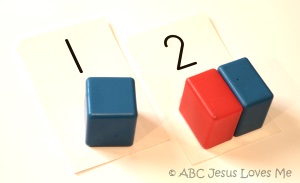
Give the child a number or show it on a flashcard, then ask them to lay out or stack the corresponding number of blocks. This activity requires 1:1 correlation.
Explore More Number Teaching Games

Use blocks as manipulatives to teach and review basic math concepts. Place the correct number of blocks next to the numbers on a flashcard to give a visual representation for addition or subtraction problems.
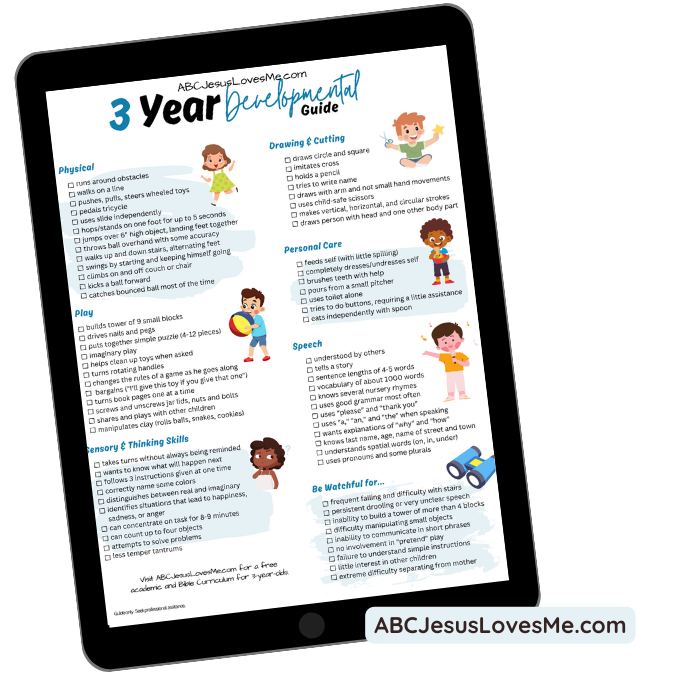
Understand of your child’s growth with our FREE 3-Year Development Checklist! This handy tool helps you track key milestones and celebrate your little one’s progress. Download your checklist today and take an active role in monitoring your child’s development!

To create a pattern with blocks, begin by selecting two or more colors or shapes. Arrange the blocks in a repeating AB sequence, such as red, blue, red, blue, and encourage the child to continue the pattern. You can also use different shapes, like circle, square, circle, square, and ask the child to replicate or extend the pattern.
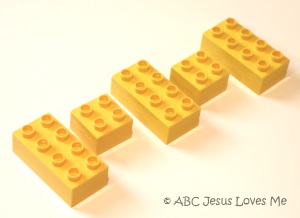
Choose two or more different shapes, such as a circle and square. Arrange the shapes in a repeating AB sequence, like circle, square, circle, square, and ask the child to continue the pattern. You can increase the difficulty by adding more shapes or changing the sequence.

Gather a variety of blocks in different sizes. Place the blocks on a piece of paper and use a marker to trace around each block. Have the child match the corresponding block to the traced shape on the paper.

Choose an object to measure with blocks. Use Duplo Legos to create a stack that matches the length of the item. Once the stack is complete, count the blocks and describe it using language such as, "The pencil is 9 blocks tall."

Build a simple stack of Legos, starting with a small design and gradually increasing the difficulty. Ask the child to duplicate what you created. Then, switch roles—have the child build and you replicate.
If the child creates the opposite of your design, refer to the Block-to-Block Direct Matching strategy to help improve visual perception skills.
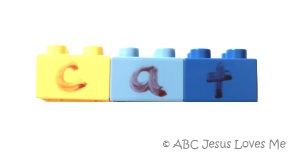
If the child is ready to combine phonetic sounds, this can be a fun activity to begin reading CVC (consonant/vowel/consonant) words. Begin by writing letters on the sides of plastic blocks with a dry erase marker.
Equip a child with spiritual tools in this fun, play-based Armor of God study. Through engaging activities and Bible lessons, children will learn how to wear and wield the armor God provides. Help them stand strong in their faith with this hands-on, faith-building experience.
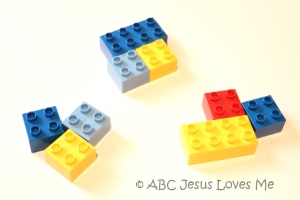
Lay a set of blocks in front of each player. The first player asks for a specific color block. If the next player has that block, he gives it to the player. Then, it becomes the next player’s turn. To increase the challenge, add a draw pile and have players match blocks, similar to a card game.
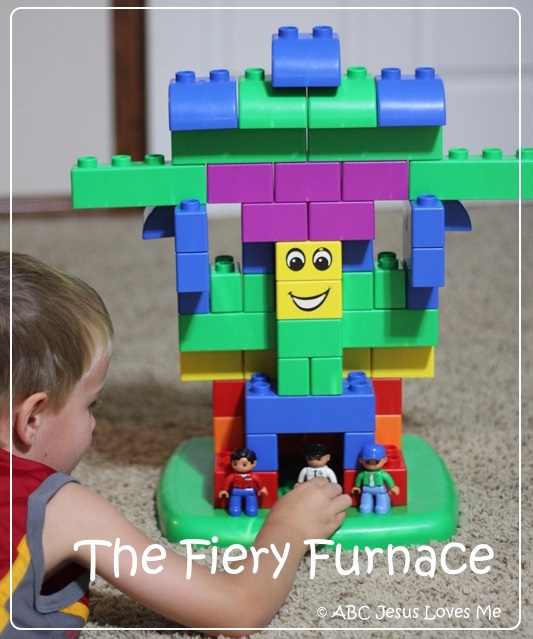
Take a picture of a child's block or Lego creation. Later, ask the child to recreate it using the photo as a reference.
This is a Fiery Furnace my youngest son built after studying the Bible story. By capturing a picture of his creation, he was able to duplicate it later, reinforcing both creativity and memory.
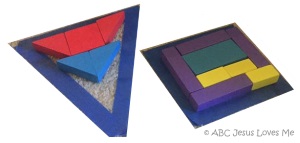
With painter's tape, draw a shape. Instruct the child to fill in the shape with blocks. In reverse, have the child build a large shape, tape around it, and remove the blocks for the child to see the shape.